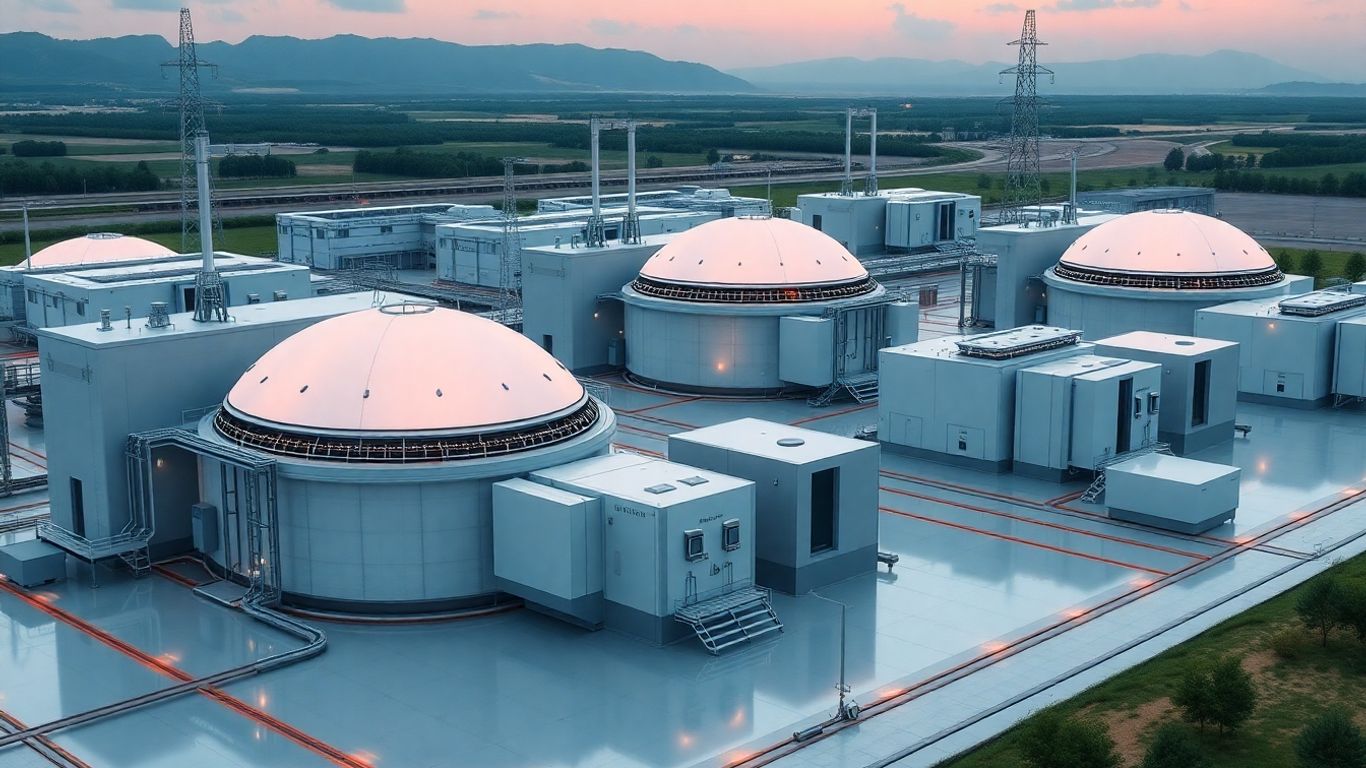The International Atomic Energy Agency (IAEA) has significantly boosted its projections for nuclear power, anticipating a potential doubling of global capacity by 2050. This optimistic outlook, detailed in the agency’s latest report, highlights the crucial role of Small Modular Reactors (SMRs) and the extension of existing reactor lifespans in achieving these ambitious clean energy goals.
Key Takeaways
- Global nuclear capacity could more than double by 2050, reaching up to 992 GW in a high-case scenario.
- Small Modular Reactors (SMRs) are expected to be a significant driver of this expansion.
- Extending the operational life of existing nuclear power plants is also a key strategy.
- Climate change concerns and energy security are fueling renewed interest in nuclear power.
IAEA’s Rosy Outlook for Nuclear Energy
The IAEA’s 45th edition of "Energy, Electricity and Nuclear Power Estimates for the Period up to 2050" presents a compelling case for nuclear energy’s resurgence. In its high-case scenario, the agency predicts a substantial increase in nuclear capacity from the current 377 gigawatts (GW) to nearly 992 GW by 2050, representing a 2.6-fold increase. This upward revision, the fifth consecutive year of increased projections, reflects a growing global consensus on nuclear power’s indispensable role in achieving clean, reliable, and sustainable energy for all.
The Pivotal Role of Small Modular Reactors (SMRs)
Small Modular Reactors (SMRs) are identified as a critical factor in realizing this growth. In the high-case projection, SMRs are expected to contribute 24% of the new nuclear capacity added by 2050. Their smaller size, enhanced flexibility, and potential for lower costs and faster deployment make them particularly attractive for countries with smaller grids or developing nuclear programs. The IAEA emphasizes that harmonized regulatory and industrial approaches will be essential for the successful and timely deployment of SMRs.
Extending Reactor Lifetimes and Addressing Challenges
Beyond new builds, the IAEA report underscores the importance of extending the operational life of existing nuclear reactors. With two-thirds of the world’s reactors currently over 30 years old, maintaining and upgrading this fleet is seen as the most cost-effective way to preserve nuclear’s contribution to the energy mix. However, achieving the high-case scenario requires significant effort. This includes an average annual addition of 26 GW of new nuclear capacity, more than four times the recent five-year average. Key challenges to overcome include providing support for newcomer countries in developing regulatory and financial frameworks, adapting regulations for new technologies like SMRs, and securing substantial investments through innovative financing models.
Driving Forces Behind Nuclear’s Revival
Several factors are contributing to the renewed interest in nuclear power. Growing concerns about climate change and the urgent need to decarbonize the global energy sector are primary drivers. Additionally, rising electricity demand, particularly from industries and the electrification of transportation, necessitates reliable and low-carbon energy sources. Policy support from governments and financial backing from development banks are also crucial in encouraging investment in nuclear projects and upgrades.












